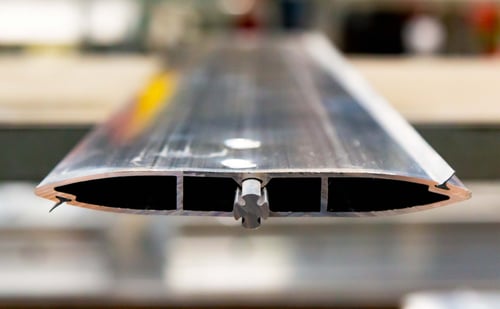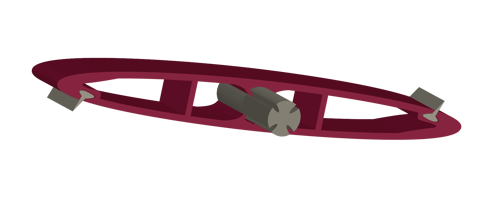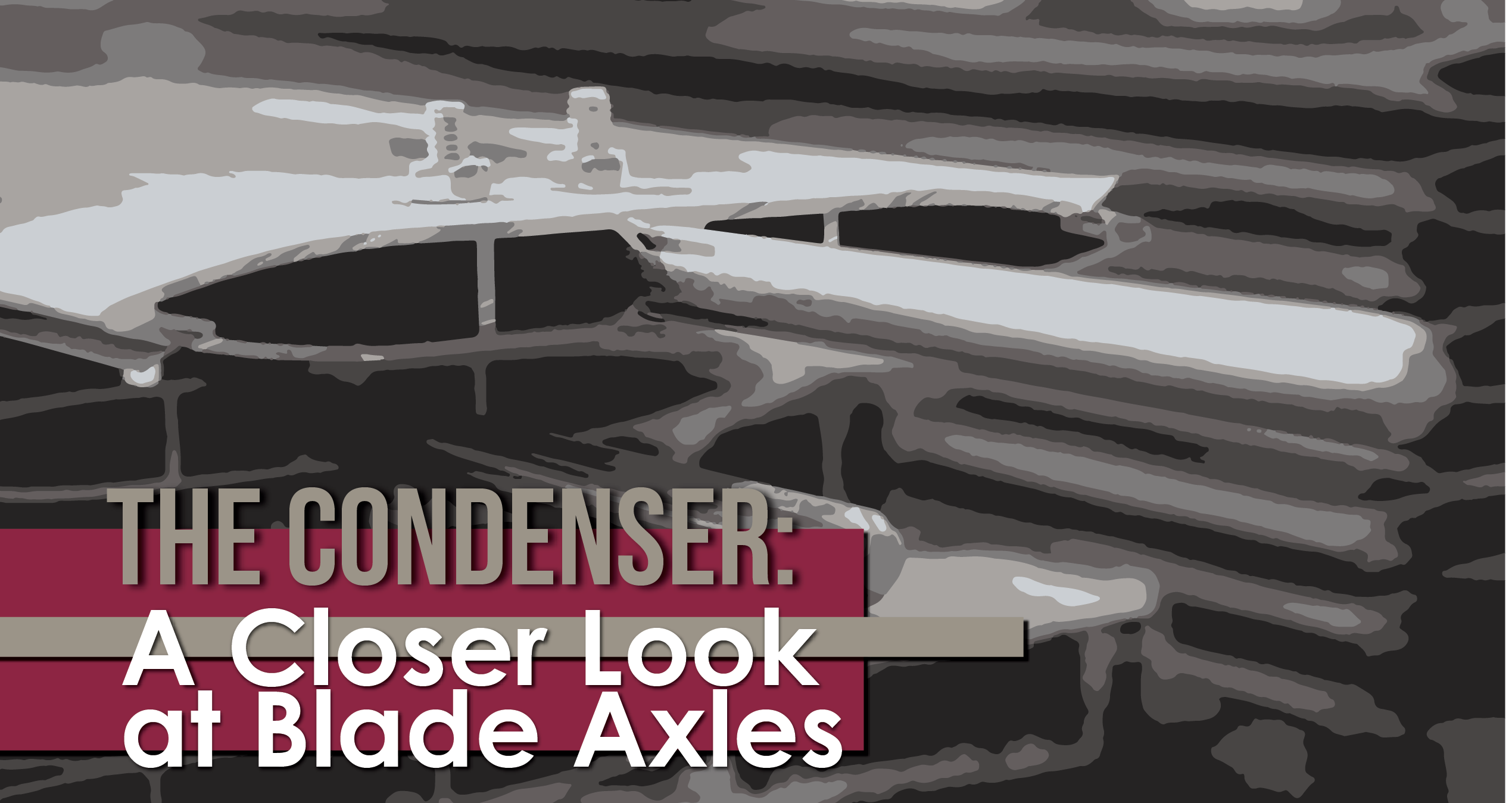In this Condenser article, we take a closer look at a key component to louver and damper blades: the blade axle. How does it work? Learn more with this quick Condenser read on the MCDLG Newsstand.
Blade axles, or blade shafts, are metal rods that run horizontally through the interior of an adjustable blade. Axles are integral to the rotation of adjustable blades. Dampers and adjustable louvers cannot open or close without them.
Every adjustable blade will have an axle. Axles are typically located at the center of the blade. The axle will be fixed to the blade with a bracket or with built-in teeth that slide into grooves along the axle. With a central axle, the blade will rotate along its center inside the frame. In this way, the blades can block off a duct or ventilation point when air isn’t moving through. Axles drive blade rotation.
Axles extend past the ends of each blade, so that they can rest inside holes in the jambs of the louver or damper. The ends of the axle will have bearings which support the axle's rotation. Once installed, the blade and axle will be suspended in the frame. The axle ends can also be connected to in-jamb linkage, to synchronize the rotation of one axle to all connected axles. For backdraft dampers, blade axles will run along one side of the blade. This design allows the blade to rotate when pushed in one direction. The blade will always rotate along its axle.
 This blade axle runs through the center of the blade, so that the blade rotates along its center. Axles can also run through one end to create a backdraft design.
This blade axle runs through the center of the blade, so that the blade rotates along its center. Axles can also run through one end to create a backdraft design.
Adjustable louvers and dampers will have an axle for each blade, but only one of those axles will be tied to an actuator. The axle tied to the actuator is known as the driving axle, or driving shaft, because it drives the rotation of the other blades. A linkage assembly consists of several pivots and rods that connect all the blade axles together, so that they rotate when the driving blade is moved by the actuator. For more info, check out "A Closer Look at Linkage".
Axles can be round, square, or “pin-lock” shaped. The pin-lock axle is round with several notches that run along the length of the rod. Check out this Condenser article for more information on the unique pin-lock axle. The blade's core will have teeth that fit these notches. These teeth will interlock with the notches for secure, slip-free rotation. Square axles will fit snuggly inside the blade, while round axles are fixed in place with a bracket tied to the exterior of the blade. This bracket will minimize slippage during axle rotation. Round dampers will typically have a single blade with no linkage. For the flat round blade, the axle will be fixed to the blade with a bracket.
There are two ways to extend the driving axle past the damper frame: with an extended shaft kit or with an extendable shaft. Learn more about these options in our quick Condenser article "Extendables". These options can help you tie multiple dampers together, so that all panels open and close at the same time. You can also tie dampers together with a jackshaft. Jackshafts are standalone axles installed behind connected dampers. They are designed to synchronize blade rotation across multiple dampers. Actuators must be able to generate enough torque to drive all connected dampers.
 Take note of the notches on the axle and the teeth along the blade's center. These teeth will interlock with the axle and minimize slippage during rotation.
Take note of the notches on the axle and the teeth along the blade's center. These teeth will interlock with the axle and minimize slippage during rotation.
Blade axles drive the rotation of adjustable blades. They are a vital component for adjustable louvers and dampers. These units can perform their roles in your HVAC system and keep air moving, all thanks to their axles.
.webp?width=91&height=70&name=MCDLG%20Logo%20(Resize).webp)





